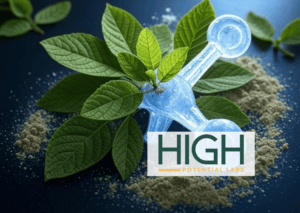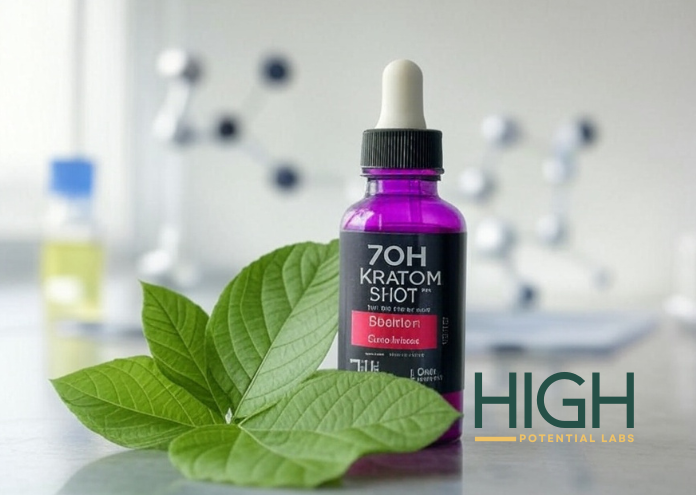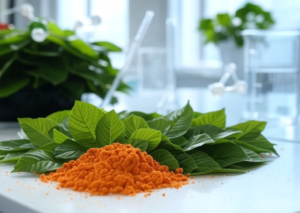


In February 2020, Johns Hopkins Medicine released a significant study titled “Natural Herb Kratom May Have Therapeutic Effects And Relatively Low Potential For Abuse Or Harm, According To A User Survey,” published in Drug and Alcohol Dependence. Kratom Johns Hopkins Study, conducted by a team of experts including Albert Garcia-Romeu, David J. Cox, Kirsten E. Smith, Kelly E. Dunn, and Roland R. Griffiths, delves into the effects, safety profile, and potential applications of kratom based on self-reported data from more than 2,700 users. As kratom—a tropical plant native to Southeast Asia—continues to spark debate in the United States regarding its legal status and therapeutic value, this study provides valuable insights into its real-world use and implications. This article explores the study’s methodology, key findings, limitations, and broader context, shedding light on why kratom warrants further investigation rather than outright prohibition.
Kratom, scientifically known as Mitragyna speciosa, is a plant from the coffee family (Rubiaceae) that grows primarily in Southeast Asia. Traditionally, it has been used for centuries by laborers to enhance endurance and by others as a remedy for various ailments, including pain and opioid withdrawal. The plant contains numerous alkaloids, with mitragynine and 7-hydroxymitragynine (7OH) being the most prominent. These compounds interact with opioid receptors in the brain, producing effects that range from stimulant-like at low doses to sedative and analgesic at higher doses. In the U.S., kratom has gained popularity—estimated by the American Kratom Association to be used by 10 to 16 million people—often purchased online or in smoke shops as a powder, capsule, or extract.
Despite its widespread use, kratom remains unregulated by the U.S. Food and Drug Administration (FDA), and its safety and efficacy have not been formally established through clinical trials. This regulatory gap, combined with its opioid-like properties, has fueled controversy, prompting periodic calls from agencies like the Drug Enforcement Administration (DEA) to classify it as a Schedule I substance—a category reserved for drugs with no accepted medical use and high abuse potential, such as heroin. The Johns Hopkins study challenges this narrative, offering data-driven perspectives from users.
The Johns Hopkins team conducted a cross-sectional, anonymous online survey between January and December 2017, recruiting 2,798 kratom users primarily through social media and the American Kratom Association. Participants, with a mean age of 40 (standard deviation = 12), were predominantly White (90%), female (61%), and U.S.-based (97%). The survey collected detailed information on user demographics, patterns of kratom use, perceived effects, and experiences with dependence or adverse outcomes.
To assess kratom’s abuse potential, participants completed a Substance Use Disorder Symptom checklist aligned with the American Psychiatric Association Diagnostic and Statistical Manual of Mental Disorders, Fifth Edition (DSM-5) criteria. This allowed researchers to evaluate whether kratom use met thresholds for mild, moderate, or severe substance use disorder (SUD). The study also gathered self-reported data on therapeutic benefits, side effects, and withdrawal experiences, providing a comprehensive snapshot of kratom’s real-world impact.
Therapeutic Effects
The Kratom Johns Hopkins Study revealed that kratom users primarily turn to the herb for its therapeutic potential. A striking 91% of respondents reported using kratom to alleviate pain, including back, shoulder, and knee discomfort. Additionally, 67% used it for anxiety, 65% for depression, and 41% to manage opioid withdrawal symptoms. Among those using kratom for opioid withdrawal, 87% reported relief, with 35% achieving abstinence from opioids or heroin for over a year—an impressive statistic given the challenges of opioid dependency.
These findings align with historical use in Southeast Asia, where a 2015 Thai study noted kratom’s efficacy in treating opioid addiction over decades. Albert Garcia-Romeu, Ph.D., an instructor of psychiatry and behavioral sciences at Johns Hopkins University School of Medicine and a lead author, emphasized that “there may be medical applications to explore, including as a possible treatment for pain and opioid use disorder.” This suggests kratom could serve as a harm-reduction tool, offering a less harmful alternative to prescription or illicit opioids.
One of the study’s most compelling findings is kratom’s relatively low potential for abuse or harm compared to traditional opioids. Fewer than 3% of respondents met DSM-5 criteria for moderate or severe SUD related to kratom use—a stark contrast to the 8%–12% dependency rate among individuals prescribed opioid medications, as reported by the U.S. National Institute on Drug Abuse (NIDA). Approximately 13% met some criteria for kratom-related SUD, indicating mild issues in a minority of users, but this rate remains comparable to or lower than opioid dependency statistics.
Garcia-Romeu noted, “The new survey findings suggest that kratom doesn’t belong in the category of a Schedule I drug, because there seems to be relatively low rate of abuse potential.” This challenges the DEA’s earlier 2016 proposal to classify kratom as Schedule I, a move halted by public and industry pushback. The study also highlighted that while prescription and illicit opioids resulted in over 47,000 overdose deaths in the U.S. in 2017, fewer than 100 kratom-related deaths were reported in a comparable period—and most involved polydrug use or preexisting health conditions.
Safety Profile
The safety data further supports kratom’s relatively benign profile. About 33% of participants reported mild side effects such as constipation, upset stomach, or lethargy, which typically resolved within 24 hours. Only 1.9% experienced side effects severe enough to seek medical attention, and fewer than 10% reported notable withdrawal symptoms upon cessation. This contrasts sharply with the severe withdrawal and overdose risks associated with opioids.
However, Garcia-Romeu cautioned that “data is scant on whether one can overdose on kratom alone, or how it interacts with alcohol or other drugs.” Reports of rare but serious adverse effects—like hallucinations, seizures, and liver damage—when kratom is combined with other substances underscore the need for caution and further study.
The Kratom Johns Hopkins Study was reliant on self-reported data and is a notable limitation, as such surveys may not always be entirely reliable due to recall bias or subjective interpretation. The participant pool, skewed toward White, educated, middle-aged individuals, may not fully represent the broader kratom-using population, potentially overlooking demographic differences in access or experience. Additionally, kratom’s unregulated status raises concerns about product variability, contamination, or inconsistent dosing, which could amplify risks in real-world settings.
Garcia-Romeu acknowledged these issues, stating, “Unregulated medicinal supplements raise concerns with respect to contamination or higher doses of the active chemicals, which could increase negative side effects and harmful responses.” He likened the unpredictability of unregulated kratom to “getting a shot of grain alcohol when you were trying to order a beer,” emphasizing the need for FDA oversight to ensure safety and consistency.
The Kratom Johns Hopkins Study argue against an outright ban on kratom, instead advocating for regulation and further research. The researchers assert that U.S. drug agencies should “study and regulate rather than ban kratom sales outright because of its seemingly safe therapeutic potential.” Regulation could involve testing for impurities, standardizing alkaloid levels, and establishing safe dosing guidelines—measures that would mitigate risks while preserving access for those who benefit from kratom.
The study’s data also aligns with broader calls for exploring kratom’s pharmacology. NIDA has ramped up research into kratom’s alkaloids, including 7OH, which contributes significantly to its potency. Preclinical studies suggest kratom’s effects stem from a complex interplay of opioid and non-opioid mechanisms, potentially explaining its lower risk of respiratory depression compared to traditional opioids. Rigorous clinical trials are needed to validate these effects, assess intoxication risks, and clarify adverse reactions, all of which could inform evidence-based policy.
The Johns Hopkins study enters a contentious arena where kratom’s opioid-like properties have fueled both optimism and alarm. Critics, including the FDA, point to its lack of approved medical use and potential for harm, especially in concentrated forms like extracts or shots. Supporters, bolstered by user surveys and anecdotal evidence, highlight its role in combating the opioid epidemic—a crisis that claimed over 47,000 lives in 2017 alone. The study’s finding of fewer than 100 kratom-related deaths, mostly involving polydrug use, contrasts sharply with opioid statistics, suggesting a safer profile when used responsibly.
Garcia-Romeu addressed this tension, noting, “There has been a bit of fearmongering because kratom is opioid-like, and because of the toll of our current opioid epidemic.” Yet, the data suggests kratom’s risks are overstated relative to its benefits, a perspective echoed by a 2015 Thai study that revived U.S. interest in its potential for opioid addiction treatment.
The Kratom Johns Hopkins Medicine study, “Natural Herb Kratom May Have Therapeutic Effects And Relatively Low Potential For Abuse Or Harm, According To A User Survey,” offers a compelling case for rethinking kratom’s place in American health policy. With 91% of users reporting pain relief, 67% citing anxiety benefits, and 35% achieving over a year of opioid abstinence, the therapeutic potential is evident. Coupled with a low abuse rate (under 3% for moderate/severe SUD) and minimal severe side effects (1.9% requiring medical attention), kratom emerges as a viable alternative to opioids, deserving of scientific scrutiny rather than prohibition.
However, its unregulated status and the limitations of self-reported data underscore the need for caution. The path forward lies in regulation—ensuring product safety and consistency—and robust clinical research to solidify these findings. As Garcia-Romeu and his team advocate, kratom’s story is not one of outright danger but of untapped potential, waiting to be responsibly harnessed in the fight against pain and addiction. Until then, users and policymakers alike must weigh its promise against its uncertainties, guided by data like that from Kratom Johns Hopkins Study.






Our facilities are located in Illinois, Colorado and Florida.
© 2025 High Potential Labs. All Rights Reserved.